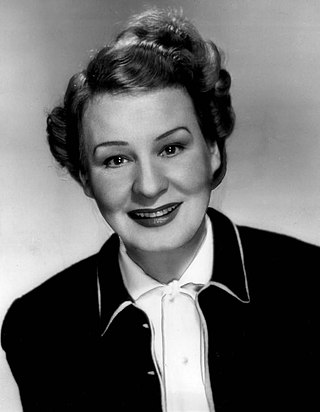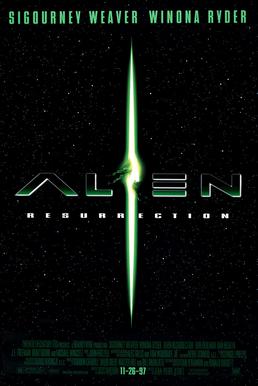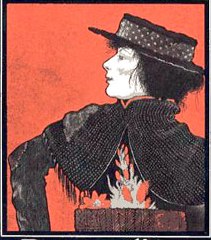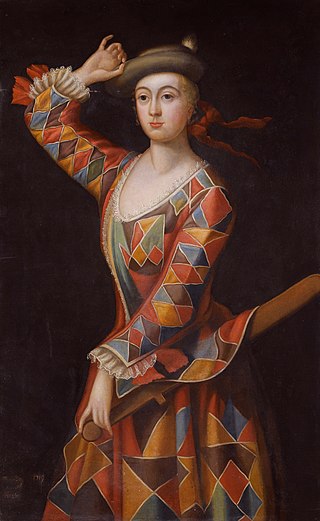
Augusta Ada King, Countess of Lovelace was an English mathematician and writer, chiefly known for her work on Charles Babbage's proposed mechanical general-purpose computer, the Analytical Engine. She was the first to recognise that the machine had applications beyond pure calculation.

Lady Chatterley's Lover is the last novel by English author D. H. Lawrence, which was first published privately in 1928, in Italy, and in 1929, in France. An unexpurgated edition was not published openly in the United Kingdom until 1960, when it was the subject of a watershed obscenity trial against the publisher Penguin Books, which won the case and quickly sold three million copies. The book was also banned for obscenity in the United States, Canada, Australia, India and Japan. The book soon became notorious for its story of the physical relationship between a working-class man and an upper-class woman, its explicit descriptions of sex and its use of then-unprintable profane words. It entered the public domain in the United States in 2024.

Shirley Booth was an American actress. One of 24 performers to achieve the Triple Crown of Acting, Booth was the recipient of an Academy Award, two Primetime Emmy Awards and three Tony Awards.

Alien Resurrection is a 1997 American science fiction horror film, directed by Jean-Pierre Jeunet, written by Joss Whedon, and starring Sigourney Weaver and Winona Ryder. It is the fourth installment of the Alien franchise, and was filmed at the 20th Century Fox studios in Los Angeles, California.

Lady and the Tramp is a 1955 American animated musical romance film produced by Walt Disney and released by Buena Vista Film Distribution. It was directed by Clyde Geronimi, Wilfred Jackson, and Hamilton Luske, and features the voices of Barbara Luddy, Larry Roberts, Bill Thompson, Bill Baucom, Verna Felton, and Peggy Lee. The film was based on the 1945 Cosmopolitan magazine story "Happy Dan, the Cynical Dog" by Ward Greene, and tells the story of Lady the pampered Cocker Spaniel as she grows from puppy to adult, deals with changes in her family, and meets and falls in love with Tramp the homeless mutt.

Akira is a Japanese cyberpunk post-apocalyptic manga series written and illustrated by Katsuhiro Otomo. It was serialized biweekly in Kodansha's seinen manga magazine Young Magazine from December 20, 1982, to June 25, 1990, with its 120 chapters collected into six tankōbon volumes. It was initially published in the United States by Marvel Comics under its Epic imprint, becoming one of the first manga works to be translated in its entirety into English. It is currently published by Kodansha Comics in North America. Considered a watershed title for the medium, the manga is also famous for spawning the seminal 1988 cyberpunk anime film adaptation of the same name and the greater franchise.
Possible Worlds is a play written in 1990 by John Mighton. The author, Mighton, is a mathematician and philosopher. His plays tend to meld science, drama and math into one cohesive piece. It is part murder mystery, part science-fiction, and part mathematical philosophy and follows the multiple parallel lives of the main character George Barber. Mighton, a mathematician from University of Toronto's Fields Institute, brought his considerable professional experience to bear on the writing of the play.

Pygmalion is a play by Irish playwright George Bernard Shaw, named after the Greek mythological figure. It premiered at the Hofburg Theatre in Vienna on 16 October 1913 and was first presented on stage in German. Its English-language premiere took place at His Majesty's Theatre in London's West End in April 1914 and starred Herbert Beerbohm Tree as phonetics professor Henry Higgins and Mrs Patrick Campbell as Cockney flower-girl Eliza Doolittle.

Meet the Robinsons is a 2007 American animated science-fiction comedy film produced by Walt Disney Animation Studios and released by Walt Disney Pictures. It is loosely based on the 1990 children's book A Day with Wilbur Robinson by William Joyce. The film was directed by Stephen J. Anderson and produced by Dorothy McKim, from a screenplay that Anderson co-wrote with Don Hall, Nathan Greno, Joe Mateo, Jon Bernstein, Michelle Spitz, and Aurian Redson. The film stars the voices of Daniel Hansen and Jordan Fry, Wesley Singerman, Angela Bassett, Tom Selleck, Harland Williams, Laurie Metcalf, Nicole Sullivan, Adam West, Ethan Sandler, Tom Kenny, and Anderson. It follows an orphaned 12-year-old inventor, Lewis, who is desperate to be adopted. He meets Wilbur Robinson, a young time-traveler who takes him to the year 2037 to visit his eccentric family. They must prevent a mysterious bowler-hatted man from changing Lewis' fate, and, by proxy, the future.

Emmett Lathrop Brown, Ph.D., commonly referred to as "Doc Brown", is a fictional scientist character in the Back to the Future franchise. In the world of the franchise, he is the inventor of the world's first and second time machines, the first constructed using a 1981 DeLorean sports car, and the second constructed using a steam engine locomotive.

Bones is an American police procedural comedy drama television series created by Hart Hanson for Fox. It premiered on September 13, 2005, and concluded on March 28, 2017, airing for 246 episodes over 12 seasons. The show is based on forensic anthropology and forensic archaeology, with each episode focusing on a Federal Bureau of Investigation (FBI) case file concerning the mystery behind human remains brought by FBI Special Agent Seeley Booth to Temperance "Bones" Brennan, a forensic anthropologist. It also explores the personal lives of the characters. The rest of the main cast includes Michaela Conlin, T. J. Thyne, Eric Millegan, Jonathan Adams, Tamara Taylor, John Francis Daley, and John Boyd.

Pickpocket is a 1959 French film written and directed by Robert Bresson. It stars Martin LaSalle, who was a nonprofessional actor at the time, in the title role, and features Marika Green, Pierre Leymarie, and Jean Pélégri in supporting roles. The film is generally considered to be one of Bresson's greatest films.

Hester Santlow was a noted British dancer and actress, who has been called "England's first ballerina". She was influential in many spheres of theatrical life.

The Mechanical Monsters (1941) is the second of seventeen animated Technicolor short films based upon the DC Comics character Superman. Produced by Fleischer Studios, the story features Superman battling a mad scientist and his army of robots. It was originally released by Paramount Pictures on November 28, 1941.

The Invention of Hugo Cabret is a children's historical fiction book written and illustrated by Brian Selznick and published by Scholastic. The hardcover edition was released on January 30, 2007, and the paperback edition was released on June 2, 2008. With 284 pictures between the book's 533 pages, the book depends as much on its pictures as it does on the words. Selznick himself has described the book as "not exactly a novel, not quite a picture book, not really a graphic novel, or a flip book or a movie, but a combination of all these things". The book won the 2008 Caldecott Medal, the first novel to do so, as the Caldecott Medal is for picture books, and was adapted by Martin Scorsese as the 2011 film Hugo.

Lolita is a 1955 novel written by Russian-American novelist Vladimir Nabokov that addresses the controversial subject of hebephilia. The protagonist is a French literature professor who moves to New England and writes under the pseudonym Humbert Humbert. He describes his obsession with a 12-year-old "nymphet", Dolores Haze, whom he kidnaps and sexually abuses after becoming her stepfather. Privately, he calls her "Lolita", the Spanish nickname for Dolores. The novel was originally written in English, but fear of censorship in the U.S. and Britain led to it being first published in Paris, France, in 1955 by Olympia Press.

La Photographie électrique à distance, released in the United States as Long Distance Wireless Photography and in Britain as Electrical Photographer, is a 1908 French silent comic trick film directed by Georges Méliès.

The Kissing Booth is a 2018 American teen romantic comedy film written and directed by Vince Marcello, based on the 2012 novel of the same name by Beth Reekles. It stars Joey King, Jacob Elordi, and Joel Courtney. The film follows Elle (King), a quirky, late blooming teenager whose budding romance with high school senior and bad boy Noah (Elordi) puts her lifelong friendship with Noah's younger brother Lee (Courtney) in jeopardy.

Lady Godiva is a 1911 American silent historical drama film directed by J. Stuart Blackton and produced by Vitagraph Studios in Brooklyn, New York. Its scenario is based on a legendary incident in the life of Godiva, Countess of Mercia, who lived in England during the mid-11th century. Allegedly, the Anglo-Saxon noblewoman rode naked—covered only by her long hair—through the streets of Coventry to protest and abolish an oppressive tax imposed on that town's residents by her husband, Leofric, Earl of Mercia. The film, copies of which survive today, stars Julia Swayne Gordon in the title role with a supporting cast including Robert Maillard, Harold Wilson, and Kate Price.















